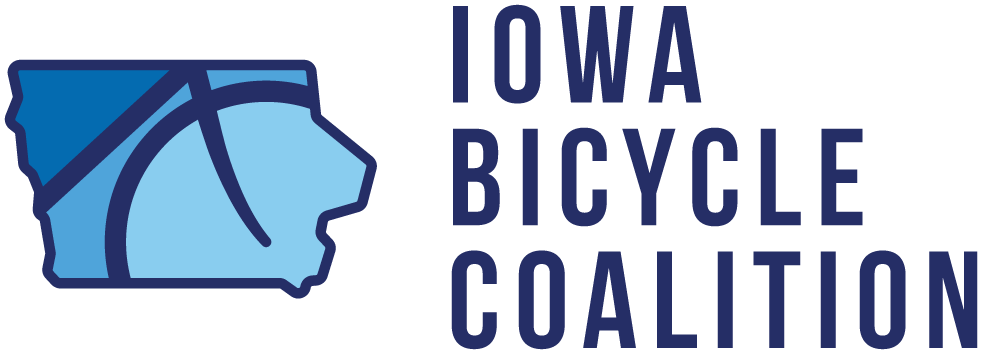In honor of National Bike Month, we’re spotlighting how bicycles are tools for personal empowerment, social justice and community development in our with our “Where the Ride Takes Us” web series. Today’s post comes from Congresswoman Tammy Duckworth, who lost both her legs when her Blackhawk helicopter was shot down in Iraqi and credits bicycling as a tool of empower, strength and recovery.
 An excerpt from Congresswoman Duckworth’s remarks at the 2013 National Women’s Bicycling Forum:
An excerpt from Congresswoman Duckworth’s remarks at the 2013 National Women’s Bicycling Forum:
We were the top of the physical conditioning heap out of high school and college, and, if you weren’t, when you joined the military, they got you into shape. So, for the most part, we were at peak condition and, in the blink of an eye, became disabled — unable to control our bodies.
These same bodies that had been so full of vigor and energy, that had been used to flying helicopters and commanding tanks. These bodies that had been used to rescuing people and pulling buddies out of harm’s way and helping civilian populations. These bodies that responded to whatever we asked of them our entire lives, no longer responded, or they were so broken they were no longer capable of doing the things we thought they should do.
And that has a psychological toll on our wounded, to go from strength to absolute weakness. I couldn’t even scratch my nose. I couldn’t move a single part of my body, except for my left wrist. To go from commanding a Blackhawk helicopter — like I used to say, strapping that 20,000-pound machine to my back — to not being able to even roll over in bed, I needed something, and biking was it for me.

They said, “Here’s a bike. We’ll start you in one that’s slightly more recumbent, because you’ve lost all the strength in your abs. This will cradle you and you can start to move your arms.” It was from there that I fully progressed to this bike that you see here (pictured), which, the entire thing weighs 18 pounds. I’ve done three Chicago marathons, which is amazing… I belong to two bicycling clubs, the Achilles Freedom Team, which deals with directly with wounded warriors across the country and also people with disabilities, and I also belong to the Missing Parts in Action team, which is macabre but funny, and we do the Army 10-miler and the Marine Corp Marathon each year.
What’s great about it is, for the wounded, when they start doing these marathons, you feel powerful, you feel strong, you feel in control. If your body can do this, you can do anything. And to have that as part of your rehabilitation, to know that, I can do this, gets the guys and gals thinking about what else can they do in their lives, where else can they go. They can ride bikes with their kids again. They can travel and go on trips with their spouses and bring their bikes along. It’s really quite an amazing gift to have.

My doctors wanted me to be in better shape than I was before I lost my legs, and this was my avenue forward… My bike I can take it anywhere, and, for myself and other wounded veterans, it’s something that represents our commitment to never giving up, and striving to do things that once seemed impossible.
Our country today faces so many challenge, not the least of which is too many Americans are unhealthy. Too many children suffer from childhood obesity. Too many Americans will see their lives cut short for lack of exercise, and good nutrition. While it won’t be easy to make this country healthier, I know that it’s possible, and I know that it takes the work of everyone in this room to promote this lifestyle… For those who are disabled, staying healthy is even more difficult. Finding a way to be healthy, finding a way to connect with your family, is something you’re always looking to do, because so often you’re isolated — and biking allows us to do that.
You know, I think of it as a leveler in a way. It’s a way we can all be on the same playing field. A way we can all enjoying the same thing. You’re seeing nature, you’re commuting together, you all have this shared experience — and you’re all on your different bikes participating in this.

If you’ve never had a chance to see what disability biking is like, there’s all sort of permutations, and all sorts of amazing folks out there working with bikes. Whatever configuration you need, you can make it work. I see kids with cerebral palsy who can only move one arm. I see kids who are blind, riding on a two-seater with their parents. I see folks, like myself, who don’t have legs, so we use our arms.
I’ve got a dear friend, Melissa Stockwell, who was the first amputee out of Iraq. She was hit by an IED and now she’s a triathlete. She doesn’t have her right leg, so she does all her biking with just the left, which is quite amazing… She’s now a paralympic champion and she would not have got into this new lifestyle had it not been for those first bikes that we got at Walter Reed, that cradled us gently in the seats and helped us build back our strength.
Watch the full video of the Congresswoman’s remarks here.

Carolyn Szczepanski
Communications Director
Carolyn joined the League in March 2012, after two years at the Alliance for Biking & Walking. In addition to managing the League’s blog, magazine and other communications, Carolyn organized the first National Women’s Bicycling Summit and launched the League’s newest program: Women Bike. Before she crossed over to advocacy, she was a professional journalist for nearly 10 years.
via Bikeleague.org Blog http://blog.bikeleague.org/blog/2013/05/where-the-ride-takes-us-recovery-for-wounded-warriors/

